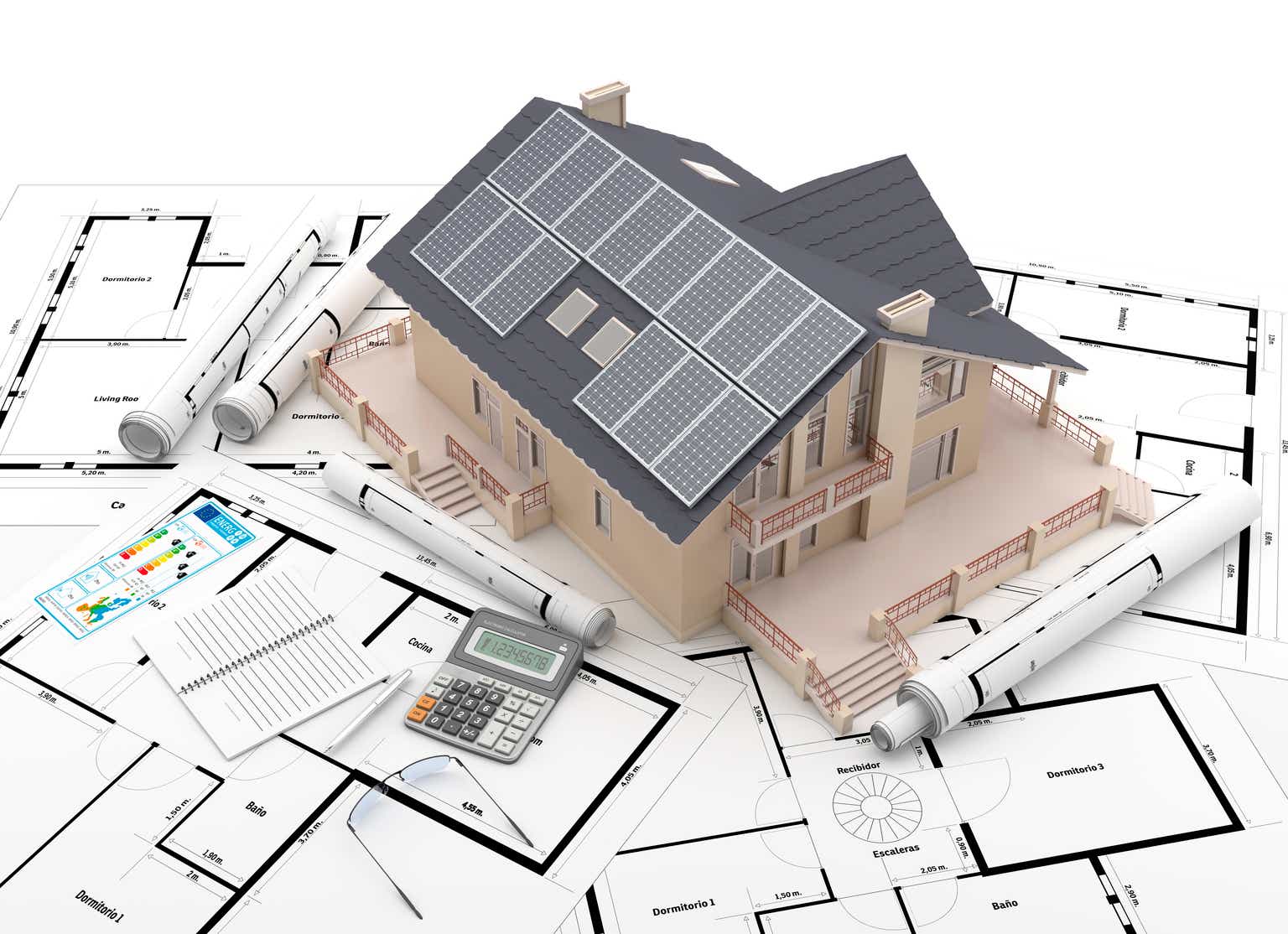It seems a weird time to be an investor, especially if you’re interested in the intersection between climate change and decarbonization of power and transport. Two weeks ago, I wrote about Fluence Energy (FLNC), which is emerging as a major player in big battery storage and managing grids with big renewables’ penetration. I argued that the future is binary for Fluence – either the decarbonization of power will be successful as part of addressing climate change, or the climate deniers and pro-fossil fuel push will dent the switch to renewables. I still argue that the upcoming presidential election is a key issue, but the possibility of recovery I noted for Fluence seems to be starting to be visible now. A number of my other renewable energy stocks are showing signs of recovery. Here I consider SunPower Corporation (NASDAQ:SPWR), which is one of the most challenging investor stories over the past year, being down 70.7% year-on-year. I see signs of life.
Before we get to where SunPower fits, there’s some background that’s essential to understand why I think that SunPower is not a basket case and nor is it addressing a market of little interest.
Will trebling of renewables be achieved by 2030?
The key influencer for me concerning renewable energy stocks is the commitment late last year by 133 countries which arose from the COP28 climate meeting to treble global renewable energy between now and 2030. To have any hope of constraining global temperature rise to 1.5C requires ~11,000 GW of renewable energy to be operational by the end of 2030. The COP28 pledge also involved doubling energy efficiency by 2030. These are massive goals, which if acted upon require companies involved with solar and wind power, plus batteries and energy management, to dramatically expand now. The goal comes at a time when the rate of new renewables growth in 2023 expanded dramatically by almost 50% to 510 GW. This was driven by China’s solar PV installations.
To provide context, in 2022, 295 GW of new renewables were added to bring the global total to ~3,400 GW at the end of 2022, which is the base year in trebling renewables calculations. To treble renewables means ~1,000 GW of new renewables each year until the end of 2030. This is a massive expansion.
The IEA takes trebling renewables by 2030 seriously. However, there are lots of actors suggesting that this isn’t going to happen and many of them plan for a world with much greater temperature increases and continued fossil fuel exploitation.
My take is that if we don’t succeed in massive exit from fossil fuels and rapid switch to renewable energy as the major power source (and electrification of transport), the damage caused by climate change is going to make markets very difficult. If you reject my basis for investing in this space, perhaps you might stop here, although you might consider today’s New York Times which had two huge climate stories, one concerning heat in India, the other massive floods in Southern Germany… unprecedented climate issues happening concurrently.
The roles of China and India
Climate Analytics released a really interesting report “Tripling renewables by 2030: Interpreting the global goal at the regional level” in February 2024. Looking region by region, a very surprising finding is that Asia is “the only region which is broadly on track to triple renewables in line with 1.5C by 2030!” The thing is that 90% of renewable capacity in Asia is largely driven by China and India now. The report argues that Asia will take a leading role providing 47% (3,850 GW) of the 8,100 GW needed to treble renewables by 2030. And it is mostly about solar…
The US
The now increasing adoption of the Inflation Reduction Act is beginning to make a significant impact and its implementation will put the US significantly on track towards trebling renewable energy by 2030.
I conclude that the US is becoming well positioned to treble its renewables market (solar and wind) by 2030. The US seems poised to make most of these gains via solar PV (although offshore wind is beginning to look interesting).
In the US utility-scale solar PV gets most attention now. I think that there are powerful reasons why rooftop solar PV is likely to gain attention soon. This is an important point because SunPower’s business is focused on rooftop solar PV and management of the power produced.
Rooftop solar as a significant player in the energy transition
The Australian rooftop solar story
Australia is a sunny country and it’s also the home of major technical developments which have enabled the development of the solar industry, although sadly for the Aussies the commercialization of solar PV happened first in Germany and later in China. However, the history of solar innovation has made Australians early adopters of solar PV, especially on their roofs. More than 30% of Australian households have solar PV.
The size of rooftop solar PV installations have also grown substantially since the early days (2010) where average household solar PV was less than 2 kW. Today, the average size of rooftop solar installations is now approaching 10 kW. This is a lot of capacity, which exceeds the needs of many households.
A recent report indicates massive potential for expansion of Australian rooftop solar power generation to 61 GW. Current Australian rooftop solar capacity is more than 20 GW and this provides 11.2% of Australian electricity supply. Already rooftop solar PV production during the daytime in South Australia regularly exceeds 100% of total power consumption in summer. Batteries are currently being promoted to help manage both local production/consumption as well as providing a vital source of reserve power that increasingly renewables dominated grids are accessing.
The success of Australian rooftop solar has meant that the large-scale solar market has struggled in Australia. The thing is that rooftop solar PV in Australia has meant that daytime electricity prices have fallen, making large-scale solar PV less competitive. This is forcing commercial solar projects and wind power to include battery storage to be competitive.
The US rooftop solar story
Most US solar PV installations are large scale currently. Total solar PV in the US was 177 GW at the end of 2023 and by 2034 this figure is expected to be 673 GW. Solar is the fastest growing new power source in the US; almost 60% of new power was solar in 2024.
Rooftop solar has the potential to provide 45% of US electricity needs, but its contribution currently is tiny. Less than 1% of US electricity came from rooftop solar PV in 2024 which was sourced from ~4.2 million homes (~4% of US homes). Data from 2022 reflects the distribution of rooftop solar PV in the US. With a similar figure to Australian solar PV penetration, Hawaii had 33% of homes with rooftop solar. On mainland US California dominated with 20% of homes with rooftop solar PV. Arizona is next with 12%, but nationally ~4% of homes had solar PV. Clearly, the potential for expansion of rooftop solar PV in the US is huge. The size of US rooftop solar PV installations is smaller at 7.2 kW (median) than that of Australia (average 2024 of 9.2 kW).
SunPower’s future is closely tied to US rooftop solar uptake and management of the power produced (including storage batteries). Recently large scale solar installations have dominated the dramatic expansion of solar PV in the US. Many analysts anticipate that residential solar will continue to struggle. I have a different view of residential solar as I explain in this article.
SunPower’s business restructure in 2024
We’re living through a time where high-interest rates means cost pressures on individuals. This particularly affects businesses that are retail-focused and SunPower has been impacted, especially as the focus of the solar industry in the US has been skewed towards large scale solar projects. California has dominated US solar initiatives, with 29% of the nation’s total solar power produced. While utility scale solar is touted as the cheapest and most efficient way for implementing solar power, there are a number of issues often neglected in this assessment, including delays in connecting big solar projects to the grid. A useful discussion of utility vs. rooftop solar in California reaches the conclusion that for various reasons, utility phase solar PV is unlikely to be the only solution for extra renewable power needed. In the past, rooftop and utility scale solar were both emphasized in California and both forms of solar PV contribute substantially, with 55% of California’s solar power coming from utility scale solar and 45% coming from rooftop solar.
In 2023, a dramatic shift in the support for rooftop solar was implemented in California at short notice by dramatically reducing (by 70%) the payment for excess power sent to the grid. This has been a disaster for the rooftop solar industry in California, and hence for the US industry, as California is a major contributor. It remains to be seen how this will play out. One thing that is helping in California is strong support for householders to purchase batteries to enable them to manage their own power generation. The point is that rooftop solar PV is fast to implement, and it involves local power production and use, so it does not place big stresses on the existing grid. It takes only a couple of days to install rooftop solar PV and start generating power.
There has been a big targeting SunPower through shorting of its shares. That has exacerbated the pressure on the company and without the support of major shareholders the survival of the company could be in question.
Most likely due to the recent Californian disaster for rooftop solar PV and short attacks, there have been a number of significant decisions about the business in 2024, including the exit of CEO Peter Faricy and a fundamental change to how SunPower interacts with customers. The success of the Blue Raven distributorship is probably part of the decision made by SunPower to exit direct customer sales in favor of supporting a network of qualified distributors (including its wholly owned Blue Raven subsidiary). This has led to a very large slimming of the business, with 1,000 redundancies of direct sales staff. Note the SunPower redundancies are part of a massive downturn for rooftop solar PV in the US, with reports of 17,000 redundancies (22% of the solar workforce) forecasted by the end of 2023 in California by the California Solar & Storage Association. This situation is repeated in other states (e.g. Arizona, Hawaii, Nevada, Utah) where attractive benefits for installing rooftop solar PV have been lowered.
With the increasing importance of managing intermittency through battery storage, the recent addition of the Tesla (TSLA) Powerwall 3 (including Tesla Powerwall inclusion in SunPower Financial loan and lease) is likely to be significant.
The role of TotalEnergies and Global Infrastructure Partners
SunPower, announced yesterday that it has drawn upon the $50 million second tranche of the $175 million second lien term loan from Sol Holding LLC that was announced in February 2024. Sol Holding, jointly owned by TotalEnergies (TTE) and Global Infrastructure Partners, is the majority owner of SunPower’s common stock. It seems to me that the $175 million loan involves warrants to acquire a total of 78 million shares (in two tranches of 44.6 million and now a second tranche of 33.4 million shares of SunPower common stock). A Schedule 13D filing dated May 30, 2024, refers to 162,970,512 SPWR shares beneficially owned by Global Infrastructure Investors III, LLC (with contact information given as Global Infrastructure Partners) and that these shares amount to 65.1% of issued shares. There were 175,361,088 shares reported issued as of December 2023. If the two tranches are added (41,612,944 and 33.4 million), this brings the total shares issued to 250.3 million (assuming the warrants are exercised). If I understand this correctly, Sol Holding LLC (which is owned jointly by TotalEnergies and Global Infrastructure Partners) as a result of the second tranche drawdown now owns 65.1% of SunPower shares.
Global Infrastructure Partners (GIP) is a leading Infrastructure Investor which invests in, owns and operates some of the largest and most complex assets, including energy. It works with large industrial partners. GIP has a track record of investing in renewable energy. They have a team focused on decarbonization investment opportunities. GIP views the energy transition as the single biggest investment opportunity, needing $5-10 trillion of annual investment to reinvent the global energy system. To make things more complicated Global Infrastructure Partners was acquired by BlackRock (BLK) in January 2024.
Given the above, it’s not surprising that the press release from SunPower concerning the second tranche of the loan includes substantial changes to the business around cash flow and moves toward positive cash flows. There’s also ongoing work to finalize its restated 2022 10-K, 2023 10-K and Q1 2024 10-Q filings.
Where all of the above fits is a bit beyond my pay scale, but what’s clear is that SunPower is now very solidly controlled by some very big players in the renewable energy transition. How the ownership between TotalEnergies and Global Infrastructure Partners (BlackRock) sits isn’t entirely clear to me, but what seems clear is that, notwithstanding a huge short attack, SunPower isn’t going anywhere other than seeking to be a major player in the US rooftop solar market.
What the market thinks
Two Seeking Alpha authors in the past 90 days are negative about the stock (1 ‘sell’, 1 ‘hold’), while 26 Wall Street analysts are mostly ‘hold’ (15) but the rest are negative (4 ‘sell’, 7 ‘strong sell’). Seeking Alpha’s Quant rating is ‘sell’, which is consistent with how it deals with stocks in emerging industries.
What I think
There’s no question that SunPower is a wild ride. When I last covered the stock in November 2023, the share price was $4.03. In the past year, it has traded down from a year high of $12.18 to a year low in April of $1.77. It was only in May that signs of recovery in share price have been evident, with the share price up 35% in the past month, although this recovery might in part be due to a massive short squeeze. Note that, unlike some of the mad shorting going on, SunPower is a real company with real market prospects (see who controls it above). The imponderables make it hard to predict what will happen next, but my analysis suggests that there’s the possibility of a substantial share price increase beyond short games.
Conclusion
The SunPower story is not uncomplicated, but I hope the case I’ve made above, suggesting that SunPower is controlled by major players in the energy transition and that the US will ultimately follow Australia and Hawaii in having major uptake of rooftop solar, is worth your attention. I’m clearly in my contrarian role with this company. My initial investment in SunPower had an average entry price of $7.08, but very recently I’ve averaged down with purchase at $2.96. This leaves me with an average entry price of $4.03, which is below the current share price ($3.24). I’m hoping that my analysis is correct and that recovery has started. As I’ve indicated, there are several unknowns, with the big one being the outcome of the upcoming presidential election. In the end, I don’t think that the US will be able to disconnect from what’s happening globally, but wildcards can surface with what happens in November.
I am not a financial advisor, but I follow closely the dramatic changes happening as the world exits burning fossil fuels and electrifies everything (including transport). I hope that my perspective is useful for you and your financial advisor as you decide about energy and transport investment generally and SunPower in particular.
Editor’s Note: This article discusses one or more securities that do not trade on a major U.S. exchange. Please be aware of the risks associated with these stocks.
Read the full article here









Leave a Reply